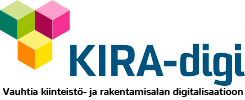Digital land use planning and reform of the planning system
One part of the digitalisation of the construction sector is the digitalisation of land use planning. It is closely related to the overall reform of the Land Use and Building Act currently under preparation, which will create the basic preconditions for digital operating practices in the sector.
One of the visions for the reform is that in 2025, an up-to-date planning view can be accessed online that shows the current status of all valid land use planning decisions. To find detailed information on a plan, all you need to do is click on it.
Should you wish, you could also access information on local environmental protection sites, ground water areas and maps of areas exposed to noise in the same view. The system would offer all up-to-date information on the status of the environment as well as valid environmental plans and decisions. A full-service plan would serve users by offering all available information at a single location and alerting the users straight away if their plan is incompatible with valid land use planning decisions.
What kind of problem is the project trying to solve?
Comparable and up-to-date data that can be retrieved easily and fast is required for smooth land use planning. When the decision and reports are available for everyone to use, collaboration between the public and private sectors becomes smoother. An efficient and open planning system makes it possible to implement a better living environment.
Land use decisions and plans issued by different authorities – permits, regulations, rights of use, prohibitions to build and planning information – are currently dispersed. Some of them are still documents on paper.
Different databases have been formed of information on decisions, but the systems are mainly for internal use of the authorities. The data is difficult to use in other processes and systems and transferring them is laborious and time-consuming. The fact that the information is not well organised and is segregated is slowing down the utilisation of digitalisation in land use planning and duplicate work also creates extra costs to taxpayers.
How will the planning system be reformed?
KIRA-digi develops planning to promote both the operating models and data contents and their compatibility in different systems. The objective is open interfaces, through which land use data will be available to everyone.
Land use data contains legal decisions made by the authorities and detailed local plans, local master plans and regional land use plans, permits, prohibitions and information on the planning process. Shared criteria and administration principles complying with international standards will be determined for these key decisions as well as a cooperation model, through which data will be available to everyone.
Alongside KIRA-digi, more specific definition work is carried out in the Maankäyttöpäätökset (Land Use Decisions) sub-project, which in turn is part of the Paikkatietoalusta (Geospatial Platform) harmonising the geospatial data held by the central government, counties and local authorities.
The information models for digital land use planning are tested in experimental projects under KIRA-digi in Helsinki, Tampere and some other locations.
Contact information




